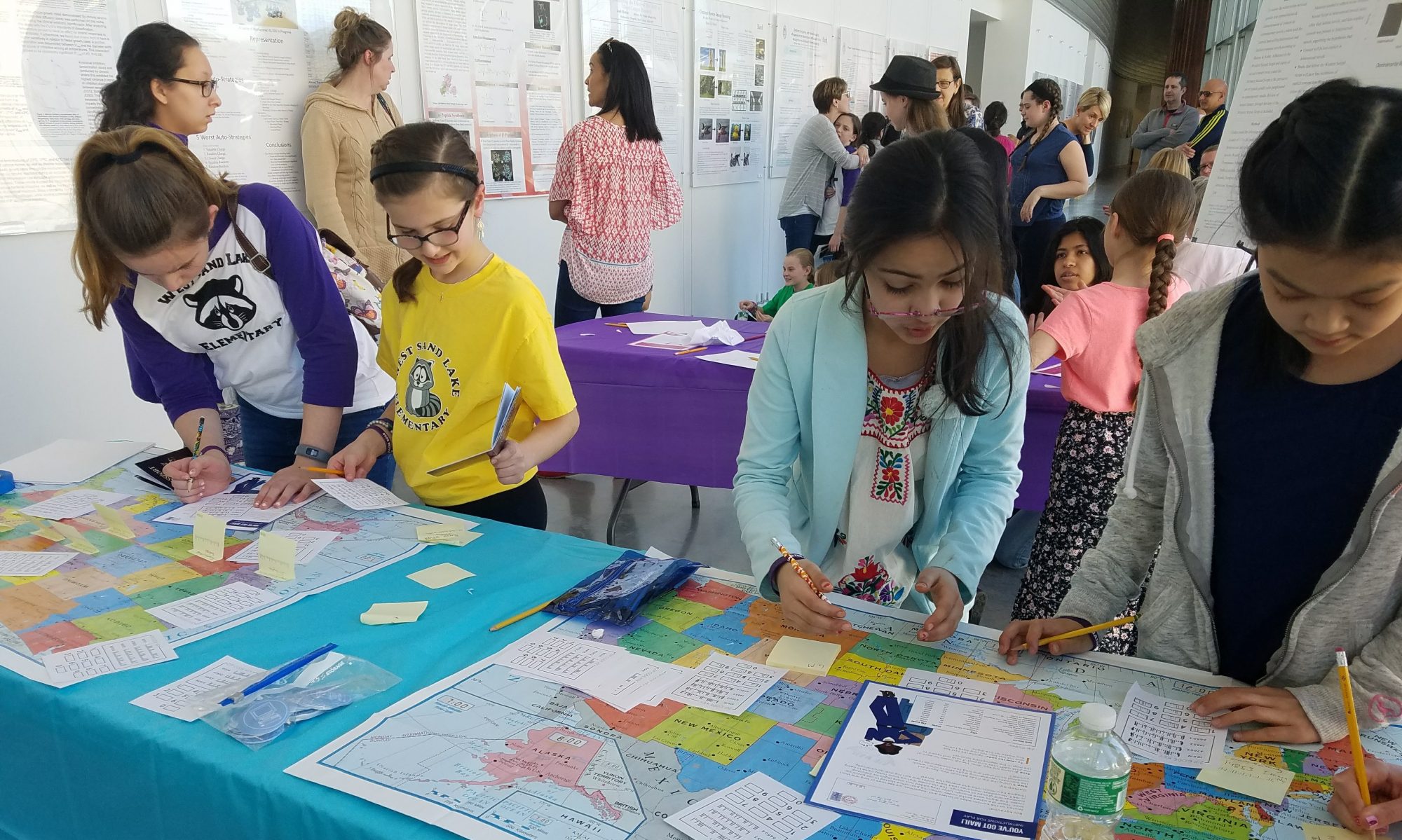- A|BCD
- AB|CD
- AC|BD
- AD|BC
- ABC|D
- ABD|C
- ACD|B
Bard Math Circle at the Red Hook Public Library
The Bard Math Circle will be traveling to the Red Hook Public Library on September 16th from 5:00-7:00! There is a brand-new, beautiful Children’s Library in the basement of the building, which will serve as a great space for us.
Come and play some games, dissect some squares, and learn some strategies!
(I challenge everyone to a game of Set.)
Bard Math Circle at Kingston Library – more highlights
We had our first math circle of the year yesterday at the Kingston Library. This circle meets on the 2nd Saturday of each month, so:
Second Saturdays, 1-3pm at the Kingston Library, 55 Franklin Street, Kingston NY 12401
2011: September 10, October 8, November 12, December 17
2012: January 14, February 11, March 10, April 14, May 12
Here are some of the mathematical highlights:
Area Puzzles
The problem sheet this month had dissection problems. Goal: cut each shape into pieces and rearrange them into a square. How few pieces can you use?


Dragon Illusion
The hands-on math take-away was a dragon illusion. Here’s a video that I made of the one I assembled:
//www.youtube.com/get_player
As you can see, the dragon’s head appears to follow you as you move from side-to-side. This illusion was designed by Jerry Andrus, and you can download your copy here: http://www.g4g-com.org/storage/Dragon-Illusion-GG2010.pdf. If you’re interested in a mathematical adventure, find out who Jerry Andrus is, and what is “GG2010”, which is short for Gathering for Gardner 2010!
The Game of 21-Nim
Jeannette taught us all how to play a game called 21-Nim. This is a game for two players, played with a pile of 21 counters. On your move you can remove 1, 2 or 3 counters, and whoever takes the last counter wins. After explaining the rules, Jeannette gave everyone a chance to play, and finished by analyzing strategies.
We’ll be playing 21-Nim at several of our circles this month, so come out and play!
Yesterday my children and I attended the Math Circle at Kingston Library. On the way home I asked them each what their favorite part of the Math Circle was. Jordan said ” When I beat Jeannette at 21 Nim!” followed by her trademark giggle. Michael enjoyed the time the Xingye spent with him explaining square roots and especially liked that Xingye signed his cast in Chinese. Alisa liked playing with the magnetic shapes. I loved all the energy in the room and seeing parents and children having fun using their math skills!
Kingston Library Circle: 2nd Saturdays this year!
The Bard Math Circle at the Kingston Public Library starts again on Saturday, September 10th, and continues through May on the 2nd Saturday of each month.
This math circle is targeted towards middle-school aged students, but everyone (especially families and math teachers) is welcome! Our goals include building mathematical intuition, insight, involvement and engagement. We encourage students to work together, to develop their mathematical communication skills, and to become part of a mathematical community.
We’ll continue our focus this year on:
- Math Games and Logic Puzzles
- Insightful Problems
- Hands-on Math Takeaways
And new this year, we’ll have a special double-focus:
- Solve the Rubik’s Cube: Bring your cube or borrow one of ours. We’ll learn an efficient solving method and then explore the mathematics behind the cube.
- Game Theory: Starting with the classic game of Nim, we’ll explore game theory through this and other delightful games.
The Bard Math Circle at the Kingston Library is organized by Bard math professor Japheth Wood, and facilitated by Bard Math Majors. If you’re interested in assisting, contact Japheth: jwood@bard.edu.
Second Saturdays, 1-3pm at the Kingston Library, 55 Franklin Street, Kingston NY 12401
2011: September 10, October 8, November 12, December 17
2012: January 14, February 11, March 10, April 14, May 12
Math Circle at Exploration School
Exploration School is a summer enrichment program housed at the campuses of St. Mark’s School (Junior– grades 4-7), Wellesley College (Intermediate– grades 8-9), and Yale University (Senior– grades 10-12). This summer I had the opportunity to work as an instructor at the Intermediate Program. My ingredients were students with a love of learning, a room to put them, and a bunch of math games and puzzles– my result was Math Circle!
August is Math Fun Month at Sarah Hull Hallock Library in Milton!
I just met with Celeste Ricciardone, the director of the Sarah Hull Hallock Library in Milton. August is officially Math Fun Month at the library!
Added: static pages
I just added our first static page! Normally, posts cycle out and you have to find them in the archives, but not so with a static page. Blogger allows up to 10 static pages, and the first one I added is “Calendar”.
It’s easy to do: from the Posting tab, just choose “Edit Pages”. It’s pretty clear from there.
Here’s a webpage that walks you through it as well: blogger-static-pages
The question now is, what static pages should we add? Please comment on this post with your suggestions for static pages.
Writing Mathematics on our Blog with Texify!
I just learned today from Mary O’Keeffe how to include mathematics on blogger. It’s not native, but does the trick, and especially a little useful if you know a little LaTeX, the mathematical typesetting language.
Let’s say you want to typset the quadratic formula. In LaTeX, you would write this as
Now just visit the texify web site: Texify and insert the LaTeX code where specified. The Texify website will then automatically generate html code for your formula, resulting in:






